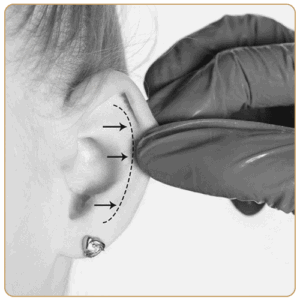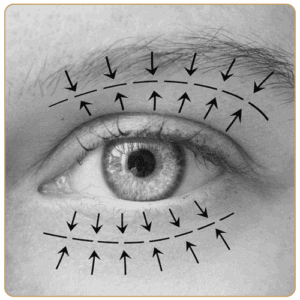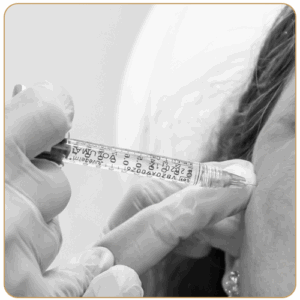Face & Necklift
Face & Necklift London
Necklift surgery, also known as lower rhytidectomy, is a transformative cosmetic procedure designed to address the visible signs of aging in the neck and jawline areas. Whether you’re considering a necklift for the first time, gathering information for a loved one, or simply curious about the procedure, this comprehensive guide will take you through the ins and outs of this popular cosmetic surgery. From what it entails and why people choose to have it, to understanding the risks and rewards, we’ll cover everything you need to make an informed decision about necklift surgery.

Who is a Good Candidate for Necklift Surgery?
One of the first steps toward a necklift is determining whether you’re a suitable candidate for the procedure. Ideal candidates are generally individuals who:
Are in good general health, both physically and mentally.
Have realistic expectations about the outcomes of the surgery.
Are bothered by the presence of loose neck skin, excess fat, or prominent neck bands.
Do not smoke or are willing to quit for a prescribed period before and after the surgery.
Booking a consultation is crucial. We can assess your health and individual circumstances to help you decide whether a necklift is right for you.
Understanding the Anatomy of the Neck
Before delving into necklift surgery, it’s important to understand the anatomy that the procedure addresses. The neck is supported by a complex network of muscles, tendons, and ligaments, which provide structure and mobility to the head. However, over time, the skin and muscles in the neck can begin to lose their elasticity, leading to various aesthetic concerns such as sagging, turkey wattle, and the infamous ‘double chin.’ Necklift surgery is designed to tighten and redefine the neck’s contours, restoring a more youthful and refined appearance.
Types of Necklifts
There are a variety of techniques available when it comes to performing a necklift, each catering to the individual patient’s needs. Traditional necklifts are more invasive and are typically recommended for patients with more advanced signs of aging, while minimally invasive techniques, including the ‘weekend necklift’ or ‘thread lift,’ are suited for those with milder symptoms. Your surgeon will discuss which approach is best for you based on your consultation and goals.
Online Consulting
Arrange a 15-minute call to discuss our treatments and services.
Before & After Gallery
The Necklift Procedure: Step-by-Step
Necklift surgery is a multi-step process that varies depending on the patient’s anatomy and the surgeon’s preferred techniques. However, the general procedure follows a set of steps:
Anesthesia and Incision
The first step is administering anesthesia, which can include general anesthesia or intravenous sedation, and local anesthesia. Once the patient is under, the surgeon will make incisions behind the earlobes and possibly under the chin. These incisions are carefully planned to be discreet and to allow access to the underlying tissues.
Reshaping the neck
The surgeon will then proceed to tighten the platysma muscle, which can be responsible for the development of neck bands. Excess fat may be sculpted through liposuction techniques or excised. The remaining skin and tissue are re-draped to create a smoother, tauter neck contour without over-tightening.
incision Closure
After reshaping the neck, the surgeon closes the incisions with sutures or skin adhesives. Drains may be placed to prevent fluid buildup, and the neck may be wrapped with bandages to support the healing process.
Recovery and Results: What to Expect After a Necklift
Recovery from necklift surgery varies for each patient, but there is a generalized timeline for what to expect.
Immediate Recovery
After the surgery, patients are likely to experience some bruising, swelling, and mild discomfort. They will need to keep the head elevated and may be advised to apply cold compresses to minimize swelling.
Long-Term Recovery
Over the following weeks, most swelling will subside, revealing the final contours of the neck. It’s important to avoid strenuous activity and lifting heavy objects to prevent complications. The surgeon will provide a detailed recovery plan to support the healing process.
The Final Result
It can take several months for the final results of a necklift to become apparent. The scar tissue will continue to mature, the skin will adjust to its new position, and any residual swelling should fully disappear.
Embracing the New You: Post-Necklift Self-Care and Maintenance
A necklift can turn back the clock, but good self-care and maintenance are essential for long-lasting results. This might include maintaining a healthy lifestyle, using sunscreen to protect the skin, and considering non-invasive treatments to complement the effects of the surgery.
Frequently Asked Questions About Necklift Surgery
To address any lingering questions, we’ll cover common queries about necklift surgery. This includes topics like the longevity of the procedure, what to tell friends and family, and more. By providing comprehensive answers, potential patients can feel more at ease with their decision-making process.
Reversing The Clock
A necklift can be a life-changing experience, restoring confidence and a sense of youthfulness. By understanding the procedure, its risks, and the benefits, you’re taking the first step toward potentially looking and feeling your best.
If a necklift is something you’re seriously considering, it is crucial to find a board-certified plastic surgeon with extensive experience in facial plastic surgery. Schedule a consultation, ask questions, and discuss your desired outcomes openly. Remember, the decision to undergo elective surgery is a personal one, and the more informed you are, the better your experience is likely to be.
If you’re interested in necklift surgery, please book a consultation.
Dr Amir Sadri – Specialist Surgeon

Dr Amir Sadir is a specialist facial surgeon based in London. He is widely published with over 40 peer-reviewed papers on an extensive range of plastic, reconstructive, and cosmetic surgery. He has presented work internationally in Europe and the USA.
He is a Consultant Plastic Surgeon at Great Ormond Street Hospital. In addition, he also owns his own private clinic and his cosmetic practice includes all aspects of aesthetic surgery, but his particular interest is in rhinoplasty and facial aesthetic surgery.
Online Consulting
Arrange a 15-minute call to discuss our treatments and services.











